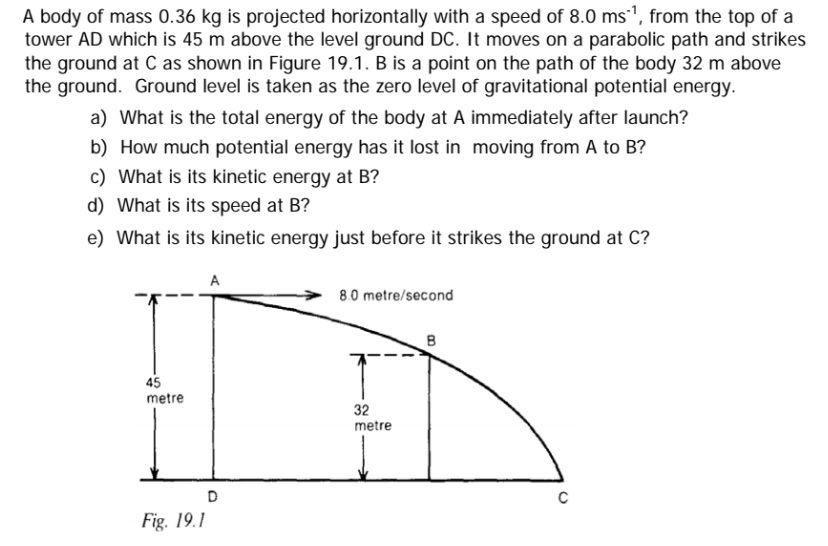Can you help with this?

1 Answer
Immediately after the launch,the body has a horizontal velocity of
And,potential energy at that point is
So,total energy just after the launch is
Now,on moving from A to B it has come down by
So,decrease in potential energy will be
So,this much energy has been converted to kinetic energy,as total energy is fixed.
So,at point B, total kinetic energy is
Now, if it has a total kinetic energy of
So,we get,
When it will hit the ground,its total energy will be kinetic energy and will be equal to its initial energy i.e

